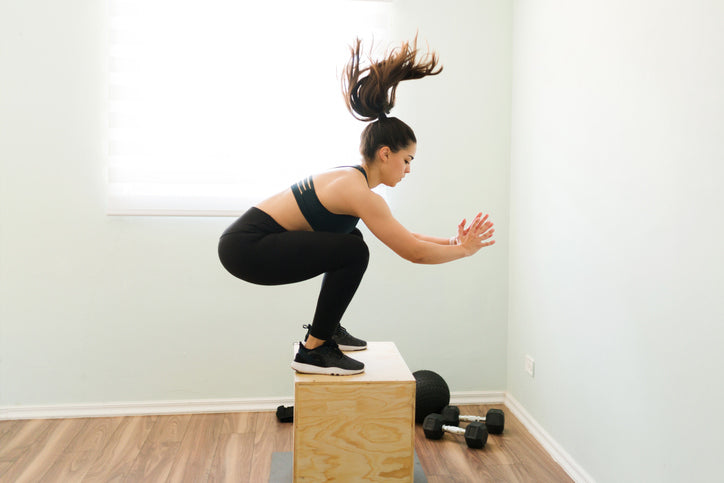A common misperception that many fitness enthusiasts have about exercise is that it is necessary to spend hours working out to get results. Nothing could be further from the truth. Workouts based around high intensity interval training (HIIT) can delivery many benefits without taking a lot of time. These benefits include burning body fat, increasing muscle definition and reducing the risk of chronic health problems!
There are many reasons why you should consider HIIT exercises as part of your exercise routine. I caught up with Personal Trainer and Study Active Tutor Kelly O’regan to discuss her thoughts on high intensity interval training.
IMPORTANT: The ideas in this article are purely for information only – please do not start an exercise programme until you have completed a PAR-Q and, if necessary, received medical clearance. Always warm up and cool down and never do any exercise that you are unsure of without the support of a qualified professional.
What is a (high intensity interval training) HIIT workout?
A HIIT workout is a type of training that involves short bursts of high intense exercise, followed by a short rest period. These workouts alternate between different exercises which can target various muscle groups of the body, following a similar format to a circuit style workout. This method of training has become extremely popular in more recent years due to its efficiency in burning more calories in a short space of time. Those short bursts of exercise can take the heart rate momentarily into the anaerobic threshold, which in turn, will burn calories quicker. Many people do not have the time (or may not want to), dedicate hours per day on a workout routine, so HIIT training can be a way to get the job done and gain the maximum benefits. It is also extremely versatile, can be adapted to suit all levels and abilities and can be performed using bodyweight exercises, as well as equipment. The expansion of technology and social platforms has really expanded the accessibility of these workouts with the vast array of free HIIT routines on YouTube and social media.
For personal trainers wanting to build on their knowledge of HIIT and other fitness methods, CIMSPA offers industry-recognised training and professional standards.
Can you please give an example of the best HIIT exercises?
For a full body HIIT workout using bodyweight only, some of the best exercises are - squats (there are many forms of squat but a good one here is the squat jump), jumping lunges, press ups, plank walkouts, mountain climbers, bear crawl and everyone’s not so favourite …. Burpees! These do not require much space so can easily be done at home where space may be restricted.
Is HIIT training suitable for everyone?
HIIT training can be suited to individuals of all levels and abilities, but it is important that they have no contraindications to exercise. Examples of such could include - unmanaged diabetes or hypertension, heart conditions, those under rehabilitation with injuries/illnesses, or those who are overweight/obese. In these instances, I would advise to seek advice from a medical professional before partaking in any high intense exercise.
What is a good example of a HIIT workout for beginners?
For beginners it would be a good idea to ensure that your work to rest ratio is proportionate to suit their fitness levels. So, for this I would perhaps look to have 20 seconds of work, with 40 second’s rest. But before commencing the main workout, a short warm up should be performed, to include some dynamic stretching. Then the main workout could look like this….
1 – Standard Squats
2 – Reverse lunges
3 – plank walkouts
4 – Press ups on knees
5 – Bicycle crunches
Each exercise would be performed for 20 seconds, followed by 40 seconds rest. Once all 5 exercises had been performed (1 round), this would be followed by 1 min rest. Then another round could be performed 2-3 more times, and all done in around 30 mins. This should then be followed by a short cooldown and static stretching.
HIIT is time-efficient, can be adapted to suit all fitness levels, and helps burn fat while maintaining muscle. If you’re interested in delivering safe and effective HIIT sessions professionally, Active IQ provides a range of qualifications to support fitness careers.
What exercises would be good for a full body HIIT workout?
Similarly, to that of above, they can be easily adapted to suit the individual, increasing the intensity/speed, and the complexity by incorporating other movements which would suit the more advanced person. We could look at a 50/50 work to rest ratio so 30 seconds work/30 seconds rest for 5 exercises. Again, keeping with the bodyweight theme, after an appropriate warm up, it would look something like this...
1 - Side step, squat & jump
2 – Jumping lunges
3 – Running on the spot with high knees
4 – Press up to shoulder tap
5 – Burpees
Again, after each round of 5 exercises, take 1 minute rest, then perform the round 2-3 more times thereafter.
What exercises would be good for a HIIT workout with weights?
The inclusion of weights can really take the workout to the next level. My favourite piece of equipment is the kettlebell, but you can also include other functional equipment, and of course free weights. With the inclusion of weights, you can increase the intensity of the exercise, but would also build on your muscular endurance. Examples of exercises could be…
Goblet Squat, squat and overhead press, weighted split squats, weighted lunges, upright row, woodchopper, russian twist, weighted step ups, weighted sit ups, ball slams.
It is important to remember, due to the intensity of HIIT workout training, I would advise to not use weights that are too heavy in order to avoid injury. You would need to be able to perform the exercise for the work duration whilst maintaining good form, but also meeting the desired intensity levels.
Summary - HIIT Workouts
Thank you to Kelly for taking the time to talk about high intensity interval training (HIIT) and provide some excellent examples of HIIT exercises including HIIT exercises for beginners. It is clear whether someone is looking for a workout that burns a lot of calories of their simply trying to get into fitness HIIT training can be a great introduction to a fitness routine. 45 seconds of burpees please!
Article by Hannah Groves with Kelly O’regan







